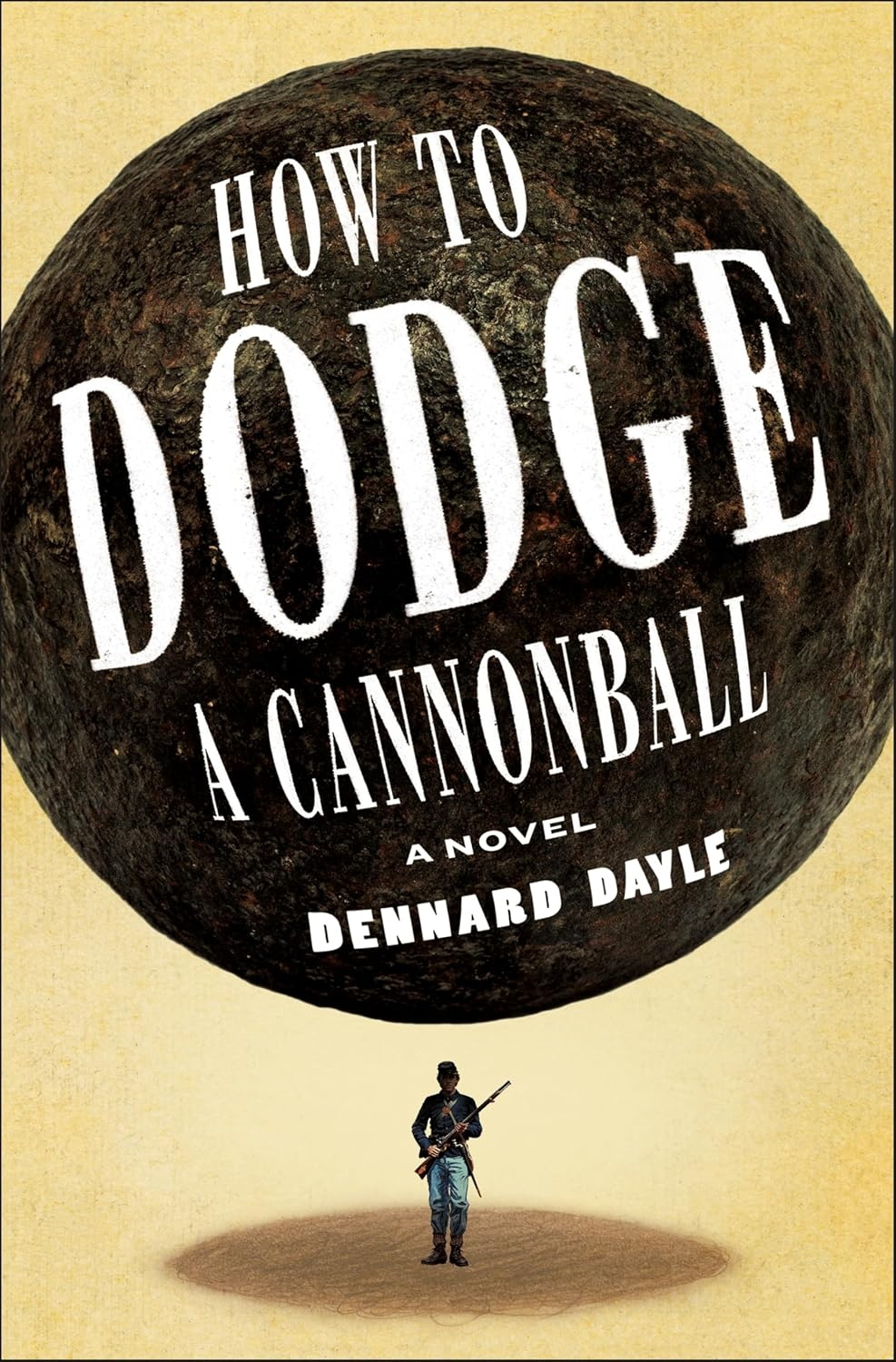Anders, the teenage protagonist of Dennard Dayle’s impressive debut, the Civil War novel “How to Dodge a Cannonball,” is an idealist, a dreamer, an optimist. And also, a fool.
Fortunately, damn fools make great protagonists, particularly in satirical novels. Their naïveté allows the reader to gain experience alongside them, and their cluelessness ensures that said experience will be funny as hell, too. Novels in the American satirical cannon dissect a variety of subjects, but their most successful targets have been race and war. “How to Dodge a Cannonball” is about both, and uses that advantage to achieve excellence.
Anders is white and grew up in antebellum-era Illinois, and yet, despite living surrounded by Black people in the free town of Liberty Valley, he manages to be utterly clueless about race. This is partially a product of the ignorance of his mother, Katrina, whose maternal style is why child protective service laws exist. But Anders’ naïveté is also one of his most admirable attributes: His obliviousness allows him to grow to the age of 15 without being indoctrinated into embracing white supremacy.
When the Civil War breaks out, Anders follows the family tradition and enlists in the military … as a flag-bearer. It’s a precarious assignment but Anders works hard at it and has even mastered several killer routines.
Anders begins his flag-bearing career for the Union, embracing their goals and mission until he is captured by the Confederate army and “shown the light.” Then he twirls for the Confederacy. When his Confederate platoon is slaughtered in a battle, Anders rethinks his values yet again. Hiding in a hole in the mud, surrounded by dead bodies, he comes to the conclusion that, rather than face death, maybe he should give the North a second try.
The best way to return is to impersonate a Union soldier, and searching among corpses for a uniform to steal, Anders decides to become B.K. Jefferson. The twist: Jefferson was a member of one of the “colored” troops. So, in one of the most illogical decisions in a satire since Huck and Jim decided to sail south, Anders decides that the safest bet for him is to become a Black man. In 1863.
Anders doesn’t look Black, so under his new alias, he tells everyone that he’s an octoroon. Repeatedly. The ruse never really works, but nobody can be bothered to challenge him, and soon he’s surrounded by a cast Joseph Heller might have aspired to create. This band includes: Corporal Tobias Gleason, a staunch believer in the American Project, and also in the power of experimental theater; a homicidal Haitian revolutionary; a captive white arms dealer even less partisan than the side-flipping Anders; and a young bugler whose identity is just as fluid as Anders’. This band journeys off the battlefield and into the equally deadly New York Draft Riots of 1863 and beyond, the forces of hypocrisy and absurdity propelling them all the way.
“How to Dodge a Cannonball” was clearly inspired by the rich tradition of Black satire in the American literary canon. The novel calls to mind James Weldon Johnson’s 1912 novel, “Autobiography of an Ex-Colored Man,” and Ralph Ellison’s “Invisible Man,” as well as books by Percival Everett, Paul Beatty and other recent masters of the form.
But despite the novel’s pedigree, “How to Dodge a Cannonball” is also refreshingly original.



 PREVIOUS ARTICLE
PREVIOUS ARTICLE
